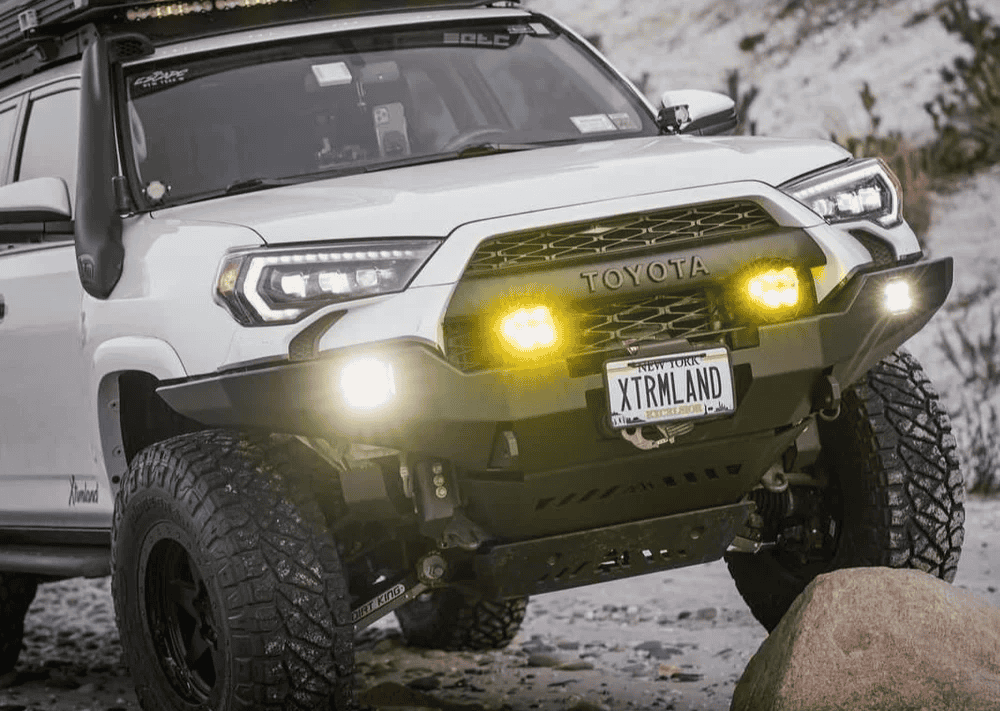Overland Vehicles

A competent 4x4 shop evaluates the vehicle as a system before turning a single wrench. That means matching tire size, axle strength, gearing, suspension travel, braking, and steering so the rig tracks straight, stays cool, and maintains safe manners. The right sequence of upgrades avoids chasing problems later, like drivetrain strain after big tires or vague steering after a tall lift.
Suspension defines how your rig handles weight, speed, and terrain. Shops tune coilovers or struts for spring rate, preload, and valving to balance control with comfort. Leaf packs and add a leaf options support payload and reduce sag. Bump stops, sway bars, and track bars protect components and stabilize the chassis. Correct alignment and proper caster are critical after lifts so steering self centers and the rig does not wander.
Taller tires change effective gearing and load the transmission. Regearing ring and pinion sets restores power and crawl control while easing heat and strain. Lockers add traction where open differentials spin a single tire. Selectable lockers give street friendly behavior with trail capability. Transfer case ratios matter too; deeper low range multiplies torque for controlled climbs and descents. A good shop checks driveshaft angles, U joints, and CVs after geometry changes.
Protection keeps the day from ending early. Steel or aluminum bumpers with rated recovery points pair with a correctly sized winch and quality line. Fairlead choice, proper wiring, and a safe load path matter as much as winch capacity. Skid plates shield vital parts like the steering rack, oil pan, and transfer case. Rock sliders carry the weight of a vehicle without crushing pinch welds. Recovery boards, soft shackles, and tree protection round out a safer kit.
Electrical work starts with a clean power plan. Dual batteries and a DC to DC charger isolate the starter while powering fridges, air compressors, and comms. Shops use correct gauge wire, sealed connectors, and fused distribution to prevent faults. Lighting should support real use cases, from driving beams and fog lights to rock lights for nighttime spotting. Radio systems like GMRS or ham improve group coordination when cell service drops.
Alternator output and wiring capacity must match added loads. Batteries need secure mounts and ventilation. Smart monitoring helps you see current draw, state of charge, and charging health. Solar can extend time off grid but should feed a proper charge controller for battery longevity.
Aim and beam pattern matter more than raw lumen claims. Good shops adjust lights to reduce glare and improve usable throw and foreground fill. Cabling is routed away from heat and abrasion, with switches labeled and protected. GMRS repeaters broaden range, and proper antenna tuning improves clarity.
After the last bolt is torqued, validation begins. Expect torque logs, alignment sheets, and test mileage. Suspension cycles should be checked for brake line stretch and tire rub at full bump and steer. A shakedown drive finds rattles, heat issues, and calibration needs before the trip, not during it.
Builds get better when goals are clear. Start by defining terrain, payload, and travel distance. From there the shop can stage work to maintain drivability while moving toward the end state. Tire fitment should consider wheel offset, scrub radius, and steering effort, not just diameter. Reliability wins every time on long trips.
Long range travel favors range, comfort, and repeatable performance. Moderate lift, quality shocks, and sensible tire size reduce wear and fuel use. Cargo management keeps mass low and secure. A quiet cabin, good lighting, and dependable power make long days easier.
Crawling emphasizes gearing, traction, and protection. Lockers, armor, and strong steering take priority. Bumpers should protect approach angles, and sliders need true frame contact. Suspension travel and droop tune traction without sacrificing stability on off camber lines.
Trucks that tow or commute need balanced spring rates, correct rake, and better braking. Heat management becomes critical, so fluids, coolers, and gearing choices should support the workload. Alignment that tracks straight reduces fatigue and tire wear.
Modern shops are also educators. Clear estimates, parts lists, and maintenance intervals help owners keep rigs healthy. A good partner stands behind workmanship, communicates often, and schedules post install checks.
If your build leans toward remote travel, see how purpose built rigs come together on our Overland page at Overland rigs. For tailored truck or van packages that balance suspension, armor, power, and interior function, review our approach to a Custom overland upfit. Curious about process, standards, and client experience before you commit, scan highlights at Why choose OZK Customs.
OZK Customs builds in Fayetteville, Arkansas, a central location that makes pickup simple for travelers nationwide. Our team handles full custom builds and partial upfits, including lifts, suspension tuning, bumpers, racks, lighting, power systems, and communications integration. We listen first, design around how you travel, and hand off rigs that feel sorted from day one.
Tell us where you drive, what you carry, and what you want the rig to do. We will create a phased plan that preserves reliability, improves capability, and fits your budget. Share a few details and we will respond with options, timelines, and a clear path to your finished build.
At a glance, OZK Customs serves:
We are here to help you travel farther with fewer surprises.
Ready for a tailored upgrade path that keeps reliability first? Tell us how you travel and we will map a staged plan, complete with parts selection, timeline, and budget. Submit the form to start your build plan and get a clear quote from OZK Customs.
ADDRESS:
6159 E Huntsville Rd, Fayetteville, AR 72701
PHONE:
(479) 326-9200
EMAIL:
info@ozkvans.com